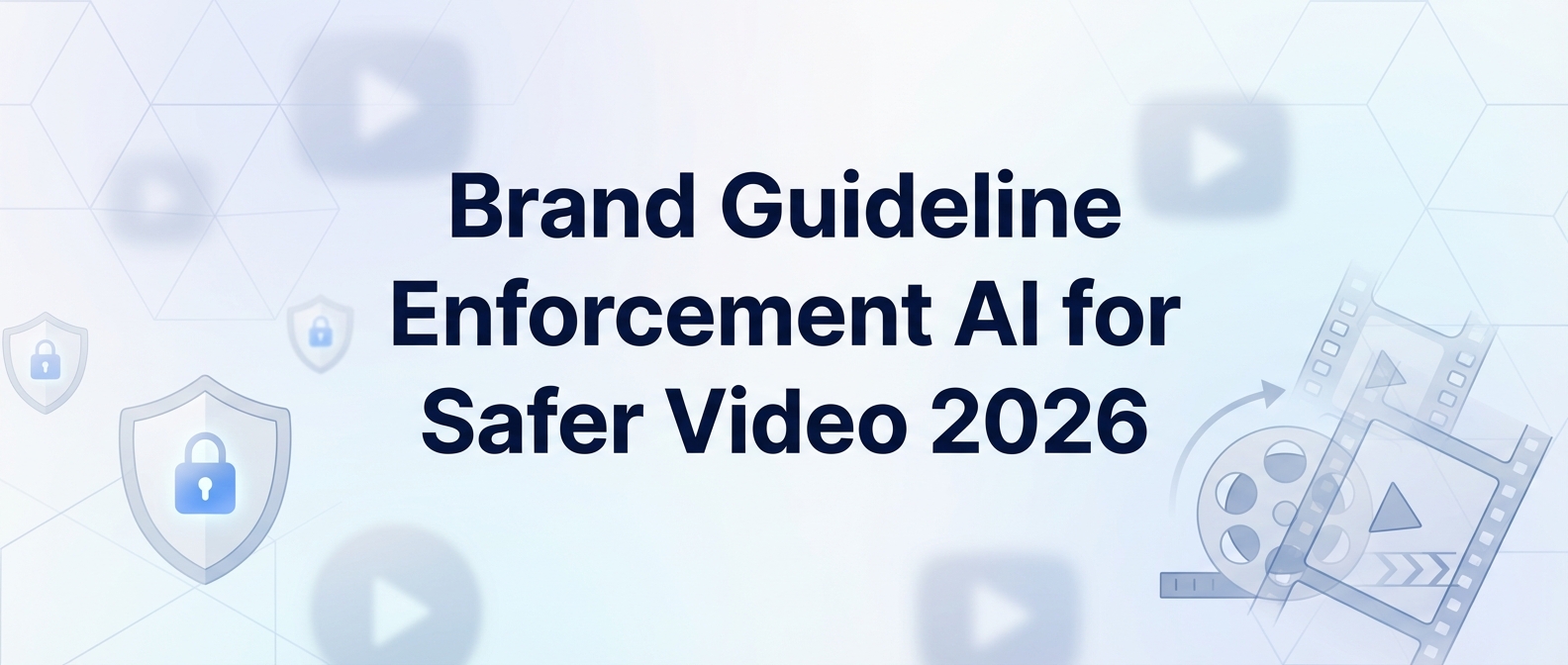The Strategic Framework for AI in Education: Beyond Platforms to ROI in 2025
Estimated reading time: ~10 minutes
Key Takeaways
- A strategic framework is essential to move beyond isolated AI tools and achieve measurable impact.
- Data-driven insights help identify the most pressing challenges and define clear KPIs.
- Proper pilot programs and phased rollouts minimize risks and ensure effective scaling.
- Addressing privacy, ethics, and pedagogy is crucial to responsible AI integration in education.
- AI frees educators for higher-value teaching tasks, boosting engagement and ROI.
In the rapidly evolving landscape of education technology, a groundbreaking 2025 forecast from Engageli reveals that students in AI-powered learning environments can achieve up to 54% higher test scores. Yet, most institutions and corporate training departments are still grappling with the fundamental question of how to move beyond simply listing popular AI tools to strategically implementing a cohesive AI ecosystem that delivers measurable returns. The common approach of adopting disparate platforms without a unifying framework is a critical misstep, leaving significant gains in efficiency, engagement, and personalization on the table. This article cuts through the noise, providing a definitive, step-by-step framework for building and scaling an AI-driven educational strategy. We will deconstruct the process from foundational challenges to advanced implementation, equipping you to not just participate in the AI revolution, but to lead it with a clear path to proving its value and achieving unprecedented learning outcomes.
https://www.truefan.ai/blogs/ai-in-education-2025-strategic-guide-boost-roi
Reimagining the Core Challenge: From Tool Adoption to Strategic Integration
The current discourse on AI in education often fixates on the novelty of specific tools, a conversation that overlooks the more profound strategic imperatives. The real challenge isn't a lack of options; it's the absence of a strategic vision for integrating them. A 2025 report from Cengage Group highlights a crucial disconnect: 65% of higher education students feel they know more about AI than their instructors. This gap signals an urgent need for institutional strategy that empowers educators, rather than leaving them to play catch-up with student-led adoption.
Furthermore, the operational upside is too significant to ignore. Recent data shows that AI can reduce the administrative burden on teachers by an astounding 44%, freeing them to focus on high-impact activities like mentorship and personalized support. When viewed through this lens, the objective shifts from merely acquiring AI software to re-architecting educational workflows. The goal becomes creating a synergistic environment where AI handles data analysis, content personalization, and administrative tasks, while educators leverage these efficiencies to amplify their teaching impact. This strategic integration is the true differentiator between organizations dabbling in AI and those harnessing its full transformative power. For a deeper dive into current AI adoption rates, see the latest analysis from EdTechReview.
https://www.truefan.ai/blogs/ai-in-training-turn-l-d-into-strategic-profit-center
The Engine of Innovation: Understanding AI's Deeper Capabilities
To build a robust strategy, one must look beyond surface-level features and understand the core technological engines driving modern educational AI. It's not just about adaptive quizzes or recommendation algorithms anymore; it's about generative AI, neural networks, and natural language processing (NLP) working in concert to create entirely new categories of learning experiences. Where older systems could only recommend existing content, today's AI can generate novel material on the fly. This includes creating unique practice problems tailored to a student's specific error patterns, drafting entire lesson plans based on a curriculum outline, or even generating video-based instructional content from a simple text script.
This generative capability is a paradigm shift. It transforms the role of AI from a passive content curator to an active content co-creator. For instance, in corporate training, this means an L&D department can produce hundreds of variations of a compliance training video, each localized for a different region and language, in a fraction of the time and cost of traditional methods. This level of scalability and personalization was previously unimaginable. Platforms like Studio by TrueFan AI enable this by using advanced AI to generate photorealistic avatar-led videos from text, complete with voice cloning and perfect lip-sync. This allows educators and trainers to become producers of high-quality, bespoke educational media at scale, directly addressing the need for dynamic and engaging content in a digital-first world.
https://www.truefan.ai/blogs/ai-employee-training-videos-strategy-guide-2025
An Advanced Framework for AI Implementation: A Step-by-Step Guide
Phase 1: Foundational Audit & Goal Setting (Months 1-2)
Before a single license is purchased, a thorough internal audit is critical. Start by mapping existing technology stacks, identifying data silos, and assessing the digital literacy of your educators and learners. Conduct stakeholder interviews to pinpoint the most pressing challenges that AI could solve. Is it administrative overhead? Learner disengagement? The inability to provide personalized feedback at scale? Define 3-4 specific, measurable Key Performance Indicators (KPIs). For example: “Reduce instructor time spent on grading by 30%” or “Increase course completion rates in our professional development programs by 15%.”
Phase 2: Pilot Program Design & Vendor Selection (Months 3-4)
Resist the urge to launch a full-scale, campus-wide initiative. Select a specific department or course for a controlled pilot program. This minimizes risk and allows for iterative learning. When selecting vendors, look beyond the feature list. Scrutinize their data privacy policies (e.g., GDPR, FERPA compliance), integration capabilities (LMS compatibility via API is non-negotiable), and the quality of their customer support and training. For global organizations, language support is paramount. The ability of a platform to deliver content across diverse regions is a massive strategic advantage. For example, Studio by TrueFan AI's 175+ language support and AI avatars allow a single piece of training content to be authentically localized and deployed globally in minutes, a crucial capability for multinational corporations.
https://www.truefan.ai/blogs/ai-avatar-generator-strategic-guide-2025
Phase 3: Execution, Data Collection & Feedback Loops (Months 5-9)
During the pilot, focus relentlessly on data collection against your predefined KPIs. Implement regular feedback sessions with both educators and learners. Use surveys, focus groups, and direct observation to gather qualitative insights. Is the AI intuitive? Is it saving time as predicted? Is it actually enhancing the learning experience? This feedback is invaluable for identifying friction points and areas for optimization. Ensure robust technical support is in place to address issues promptly, maintaining momentum and user trust.
Phase 4: Analysis, Scaling & Governance (Months 10-12)
At the end of the pilot, analyze the quantitative and qualitative data. Did you meet your KPIs? What was the calculated ROI? Present these findings to leadership to secure buy-in for a broader rollout. Develop a comprehensive AI governance policy that outlines ethical usage, data handling protocols, and guidelines for content creation and academic integrity. This policy becomes the bedrock for a responsible and effective scaling of AI across the entire organization, ensuring consistency, safety, and long-term success.
Overlooked Considerations: Navigating Ethics, Privacy, and Pedagogy
A successful AI strategy is as much about managing risks as it is about chasing opportunities. The competitor’s overview completely sidesteps the complex but critical considerations that can make or break an implementation. The most significant of these is data privacy. AI learning systems are fueled by student data; how that data is collected, stored, and used must be transparent and secure. Institutions must have ironclad policies that protect student anonymity and prevent data from being used for purposes beyond educational enhancement.
Another critical area is the risk of algorithmic bias. If an AI is trained on a dataset that reflects historical inequalities, it may inadvertently perpetuate them by recommending certain learning paths to one demographic over another. A contrarian but vital angle is to view AI not as a replacement for educators, but as a tool that demands a more sophisticated pedagogy. Educators must be trained to critically evaluate AI-generated content, guide students in its ethical use, and design assessments that test higher-order thinking skills that AI cannot replicate. Ignoring the human element—the need for teacher training, ethical oversight, and pedagogical evolution—is the fastest path to a failed AI initiative. For more on this, institutions like eSchool News offer extensive resources on navigating these digital-age challenges.
https://www.truefan.ai/blogs/ai-in-training-interactive-video-modules
Measuring True ROI & Defining Success in AI Education
The ultimate litmus test for any educational technology is its return on investment—not just financially, but in learning outcomes and operational efficiency. Vague claims of “enhanced engagement” are insufficient. A mature AI strategy requires a rigorous approach to measuring ROI.
Start with efficiency metrics. As established, AI can slash administrative time by 44%. Calculate this: (Hours Saved per Educator per Week) x (Number of Educators) x (Average Hourly Wage) = Annual Cost Savings. This provides a hard financial number that resonates with budget holders.
Next, measure learning effectiveness. Data from corporate training environments shows that AI-driven personalization can increase learning efficiency by 57% and boost course completion rates by 27%. Track these metrics pre- and post-AI implementation to demonstrate tangible improvements in human capital development.
Finally, consider cost displacement and scalability. For global organizations, content localization is a major expense. Solutions like Studio by TrueFan AI demonstrate ROI through a dramatic reduction in the costs associated with hiring voice actors, booking studio time, and managing video production for multiple languages. By generating localized training videos in-house for a low monthly fee, organizations can achieve a global reach that was once prohibitively expensive, directly tying the AI investment to strategic business expansion and risk management (e.g., consistent compliance training across all markets).
https://www.truefan.ai/blogs/ai-lip-sync-strategy-boost-corporate-elearning-roi-2025
The Future Roadmap: Preparing for the 2025 AI Landscape
The velocity of change in AI necessitates a forward-looking strategy. As we move deeper into 2025, several key trends are set to redefine the educational landscape. The first is the shift towards Hyper-Personalized Learning Journeys. This goes beyond adaptive testing to create truly dynamic, individualized curricula where AI adjusts content, pace, and modality in real-time based on a learner's cognitive and emotional state.
The second major trend is the rise of AI-Validated Microcredentials. As the demand for verifiable skills overtakes traditional degrees in many industries, AI will play a crucial role in assessing and certifying specific competencies. AI-proctored exams, project analysis tools, and skill-gap identifiers will provide a more granular and trusted way to validate a learner's capabilities throughout their career.
To prepare, organizations must prioritize flexibility and continuous learning within their own teams. This means investing in professional development to ensure educators are not just users of AI, but informed critics and creative partners with it. Building a modular, API-first technology stack will also be crucial, allowing for the easy integration of new AI tools as they emerge, rather than being locked into a single, monolithic system.
https://www.truefan.ai/blogs/ai-avatar-generator-strategic-guide-2025
Frequently Asked Questions
1. How do we ensure AI is used for learning, not just for cheating?
The key is to shift assessment strategies. Instead of tasks that AI can easily complete (e.g., summarizing a text), focus on assessments that require critical thinking, creativity, and personal reflection. Design projects that ask students to evaluate AI-generated content, identify its biases, or apply its outputs to solve a unique, real-world problem. This approach teaches students to use AI as a tool for higher-level thinking, not a crutch for avoiding work.
2. Is implementing a comprehensive AI strategy too expensive for smaller institutions?
Not necessarily. The cost of AI has decreased significantly. The strategy is about starting smart, not starting big. Begin with a targeted pilot program using cost-effective, high-impact tools that address a specific pain point, like automating administrative tasks or creating accessible content. A successful pilot with clear ROI data is the most effective way to justify a larger investment down the line.
3. How can AI support diverse learning needs and improve accessibility?
AI is a transformative tool for accessibility. AI-powered text-to-speech and speech-to-text functions can assist students with visual or hearing impairments. For learners with cognitive differences, adaptive platforms can adjust the pace and complexity of content in real-time. Furthermore, AI can generate content in multiple formats—text, audio, video—allowing students to engage with the material in the way that best suits their learning style.
4. What is the single most important factor for a successful AI implementation?
Educator buy-in and training. A technologically perfect AI system will fail if the faculty and instructors who use it every day don’t trust it, don’t understand how to use it effectively, or feel it threatens their professional autonomy. A successful implementation must be a partnership between administration and educators, with continuous training, support, and open communication at its core.
5. How can AI help us scale content creation for different departments and languages?
Generative AI is the solution for scalability. Instead of manually creating dozens of versions of a training module, AI can automate the process. For instance, a single script for a new company policy update can be used to generate videos for every department, featuring a relevant AI avatar and automatically translated into numerous languages. Platforms like Studio by TrueFan AI are designed specifically for this purpose, allowing a small team to produce a massive volume of customized, localized content with minimal effort.
6. Won’t AI make learning too impersonal and remove the human connection?
This is a common concern, but the goal of a well-designed AI strategy is the opposite. By automating repetitive and administrative tasks, AI frees up educators’ time to focus on what humans do best: mentoring, coaching, and inspiring students. AI can handle the personalized practice and knowledge delivery, allowing class time to be used for collaborative projects, deep discussions, and one-on-one support, thereby enhancing, not replacing, the human connection.
Conclusion: From Reactive Adoption to Proactive Strategy
The era of passively observing the rise of AI in education is over. The data is clear: when implemented strategically, AI is not merely an incremental improvement but a catalytic force that can drive 54% gains in learning outcomes, save educators 44% of their administrative time, and deliver a compelling, quantifiable return on investment. The competitor's approach of simply listing available tools is a relic of a bygone era; it is the strategic framework that separates leaders from followers.
By moving beyond the hype and adopting a disciplined approach—auditing your needs, piloting solutions, measuring what matters, and addressing the ethical complexities head-on—you can build a resilient and impactful AI ecosystem. The future of learning is not about replacing human educators with algorithms; it is about augmenting their expertise with powerful tools that enable personalization at a scale never before possible. The next step is not to ask if you should adopt AI, but to begin the critical work of designing a thoughtful strategy that aligns with your institution’s unique mission and goals. Begin by auditing your most pressing challenges today, and build from there.




